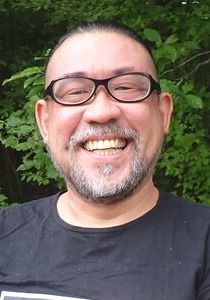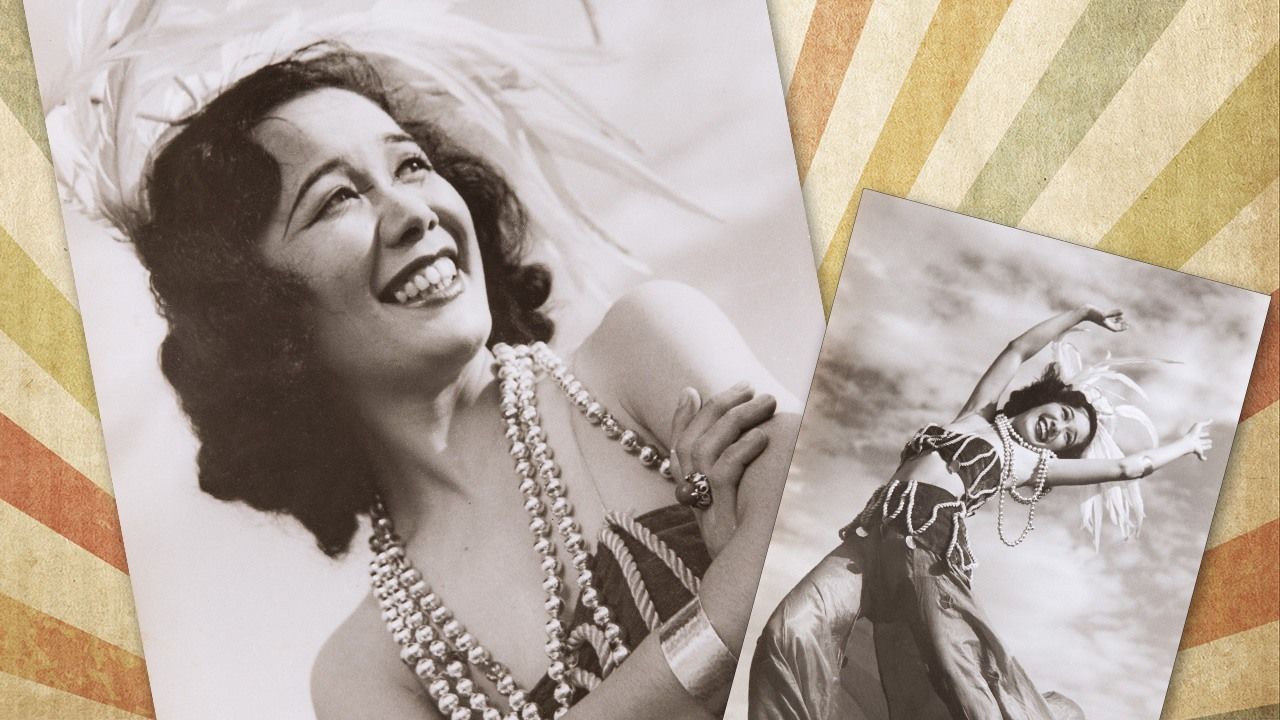
Rediscovering Japan’s Age of Boogie: How Kasagi Shizuko and Hattori Ryōichi Transformed Entertainment
Culture Society Entertainment History- English
- 日本語
- 简体字
- 繁體字
- Français
- Español
- العربية
- Русский
In an unforgettable bar scene about halfway through Kurosawa Akira’s 1948 Drunken Angel, an exotically costumed woman takes the stage to sing and dance with wild abandon, howling, “U-wa-o, wa-o, wa-o, I’m a pantheress!” With a tall feather headdress swaying over her diminutive figure, Kasagi radiates a kind of primal energy as she sings “Jungle Boogie” (to which Kurosawa himself wrote the lyrics), while the doomed yakuza played by the young Mifune Toshirō dances a feverish jitterbug. In addition to propelling Mifune—blessed with an animal magnetism all his own—to stardom, the movie captured and preserved the electrifying stage presence of Kasagi Shizuko in her heyday as Japan’s Queen of Boogie, performing the music of Hattori Ryōichi.
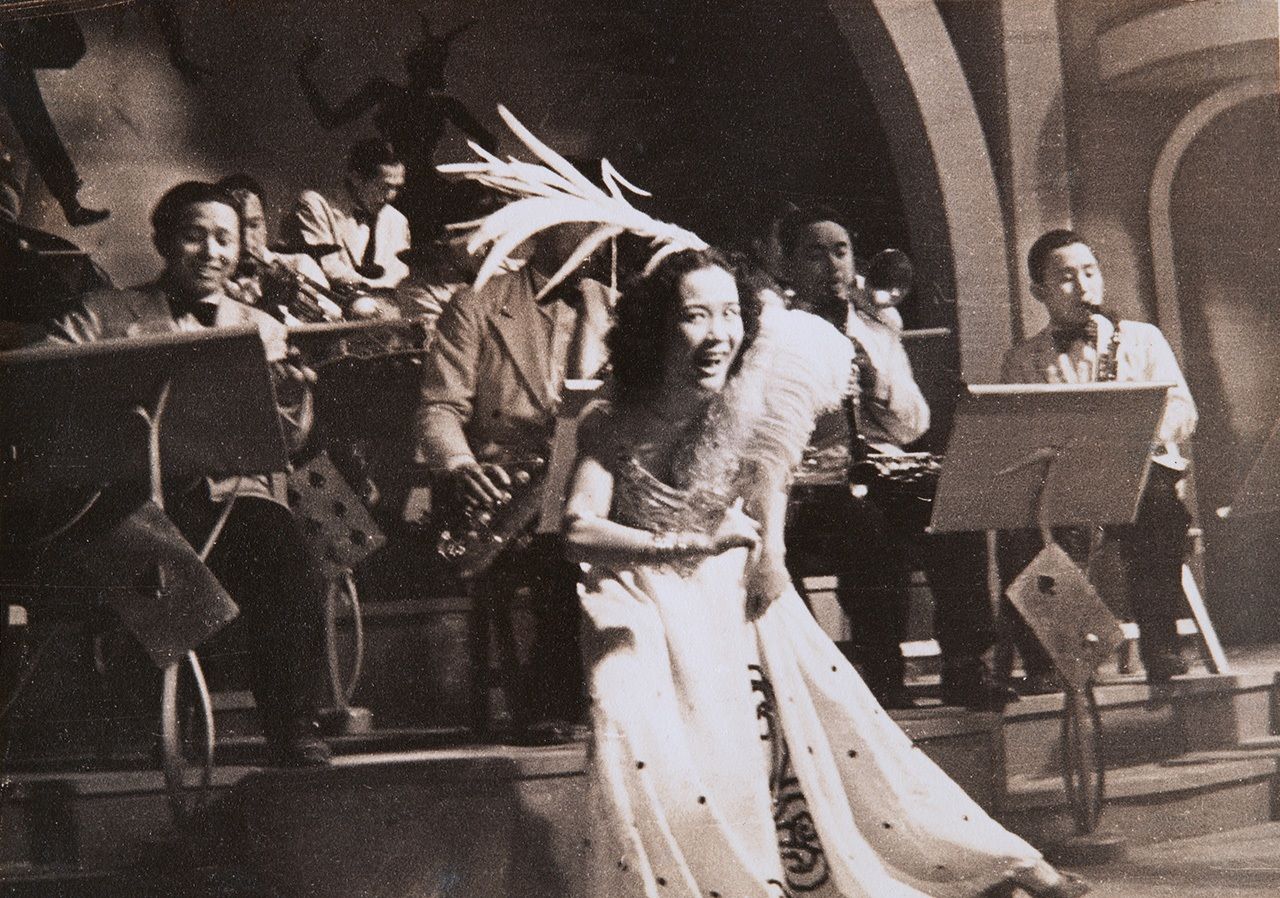
Kasagi Shizuko performs “Jungle Boogie” in the 1948 Kurosawa film Drunken Angel. (Courtesy Kasagi Shizuko Photo Archive)
“We get the full, immediate impact of ‘Jungle Boogie’ today, decades later, thanks to this work of Kurosawa,” says musicologist Wajima Yūsuke. “It’s an important film from the standpoint of cultural history, and one reason is that it offers a rare opportunity for us to actually see Kasagi sing and dance.”
Challenging the Standard History
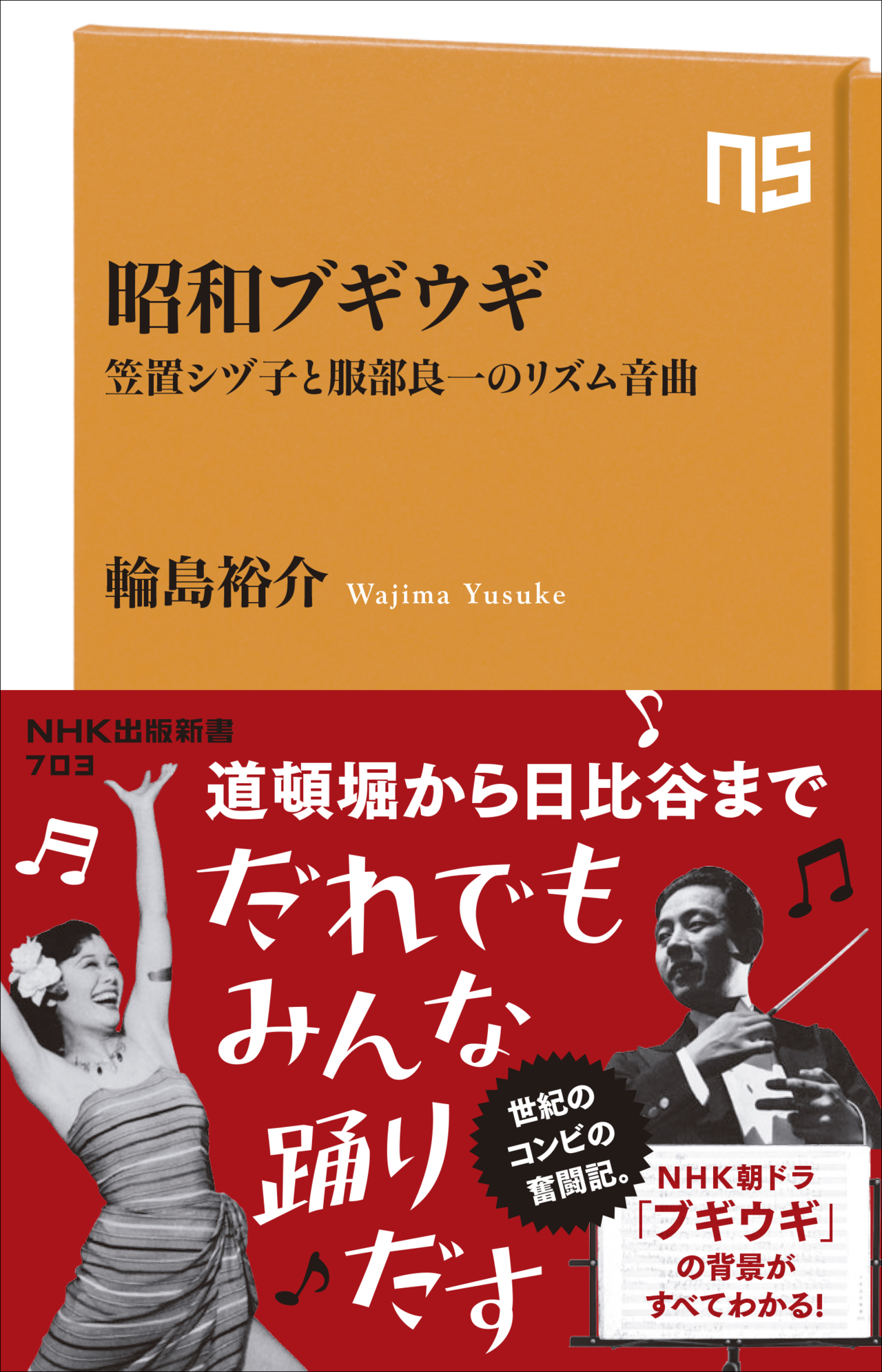
Wajima Yūsuke’s Shōwa bugi ugi (Shōwa Boogie Woogie.)
In his recent book Shōwa bugi ugi (Shōwa Boogie Woogie), Wajima spotlights the singer-songwriter team of Kasagi Shizuko and Hattori Ryōichi as the embodiment of something he calls “rhythm ongyoku,” a popular art that combines imported novelty with native sensibility, and incorporates song, dance, music, and laughter. This had its origins in the prewar years—not the Occupation era as commonly assumed. Wajima’s account challenges the conventional wisdom regarding the development of popular music in twentieth-century Japan, emphasizing the continuity between prewar and postwar currents and the influence of Osaka culture.
“According to the standard history,” he says, “Japanese popular music was fundamentally transformed after Japan’s defeat in 1945, under the US Occupation. I take issue with that view, which I think overemphasizes the centrality of Western music and neglects the role of live performance. My approach also challenges the Tokyo-centric approach that has dominated histories of modern Japanese culture.”
Roots in Osaka Culture
Although Tokyo was where Hattori and Kasagi teamed up and enjoyed their greatest success, Osaka was where they developed as artists. Each of Japan’s urban centers has nurtured its own distinctive popular culture, says Wajima, and Osaka had long-standing proud traditions. In the first quarter of the twentieth century—as one of Japan’s two largest urban centers and the nation’s industrial and commercial hub—it fostered new genres and styles of popular entertainment. Prominent among these was the “revue,” a lavish stage production centered on song and dance.
The revue craze was spearheaded by the all-female Takarazuka Revue, founded in 1914. Based in nearby Hyōgo Prefecture, the Takarazuka delighted audiences with lavish European-inspired musical-theater productions.
“It was the Takarazuka that first propelled the revue to popularity, but the genre subsequently evolved into a new performing-arts form that melded Western and Japanese styles, freely incorporating elements from such native Osaka traditions as the kabuki, geisha entertainment, and yose vaudeville theater to be found in the lively Dōtonbori entertainment district, explains Wajima.
In Osaka, where wealthy merchants wielded more cultural clout than intellectuals or government bureaucrats, the fun and novelty factors were more important than purity or adherence to any particular model. The Tokyo music scene, says Wajima, was influenced by the capital’s culturati, who regarded the Western tradition as the only legitimate one and “tended to judge music on how faithfully it adhered to Western norms. The Osaka music scene was less preoccupied with ‘orthodoxy’ and more open to incorporating novel or exotic elements and weaving them together with highbrow culture and local traditions, all in the interests of entertainment.”
This was the cultural ambience in which Kasagi and Hattori grew up and developed as artists. Both were from modest middle-class Osaka households and acquired their artistic skills more through their own efforts and performing experience than through any advanced, systematic training in Western music. Unbound by the artistic norms of this or that tradition, they placed top priority on the entertainment value of their music as performed before live audiences. Herein lay their success.
Kasagi Shizuko’s Chorus-Line Beginnings
Kasagi was born Kamei Shizuko in 1914 in Kagawa Prefecture. She was adopted and raised by a couple that operated a public bath in Osaka’s shitamachi, the city’s old plebeian “downtown.” As a child, she studied traditional buyō dance and is said to have sung and danced for customers in the changing room of her parents’ public bath, to the acclaim of the neighborhood.
In 1927, upon graduating from elementary school, Shizuko applied for admission to the Takarazuka Music School, where “girls of good family” were educated and trained to become performers in the Takarazuka Revue. According to her own account, Kasagi passed the audition but failed the physical examination owing to her small, frail-looking stature. As her second choice, she joined the all-female Osaka Shōchiku dance troupe (founded in 1922), which in the 1930s began staging elaborate musicals. Although modeled after the Takarazuka, which had debuted in 1914, it had fewer social and cultural pretensions. Its trainees and performers tended to come from a lower socioeconomic stratum, and its shows played unapologetically to the gallery with sheer flamboyant entertainment.
With almost no formal training apart from Japanese dance, Kasagi had to work her way up through the ranks and was “basically self-taught” as a singer, but she eventually emerged as an Osaka revue star, specializing in light-hearted women’s roles that showed off her singing voice.
Hattori Ryōichi’s Wide-Ranging Genius
Hattori Ryōichi was born in Osaka’s shitamachi in 1907 and grew up in a musical environment. His father was an aficionado of naniwa-bushi, a particular genre of musical storytelling, and his mother excelled at Kawachi ondo, a type of folk song that traditionally accompanies Bon dances. Though by no means wealthy, the family cared about music enough to own its own phonograph. Ryōichi grew up mimicking the traditional Japanese singing around him. He showed exceptional musical talent from a young age but had few early opportunities for formal training.
At the age of 15, Hattori joined a youth band formed by the proprietor of an eel restaurant in Dōtonbori. He made his debut as a saxophonist on September 1, 1923, the day the Great Kantō Earthquake destroyed much of Tokyo. Hattori made rapid progress as a musician, and in 1926—shortly after the start of radio broadcasting in Japan—secured a place in the newly formed Osaka Broadcasting Station Orchestra (predecessor of the Osaka Philharmonic Orchestra). The Ukrainian-born conductor Emmanuel Metter, appointed to lead the ensemble, became a mentor to Hattori, who studied music theory, composition, orchestration, and conducting at Metter’s Kobe home.
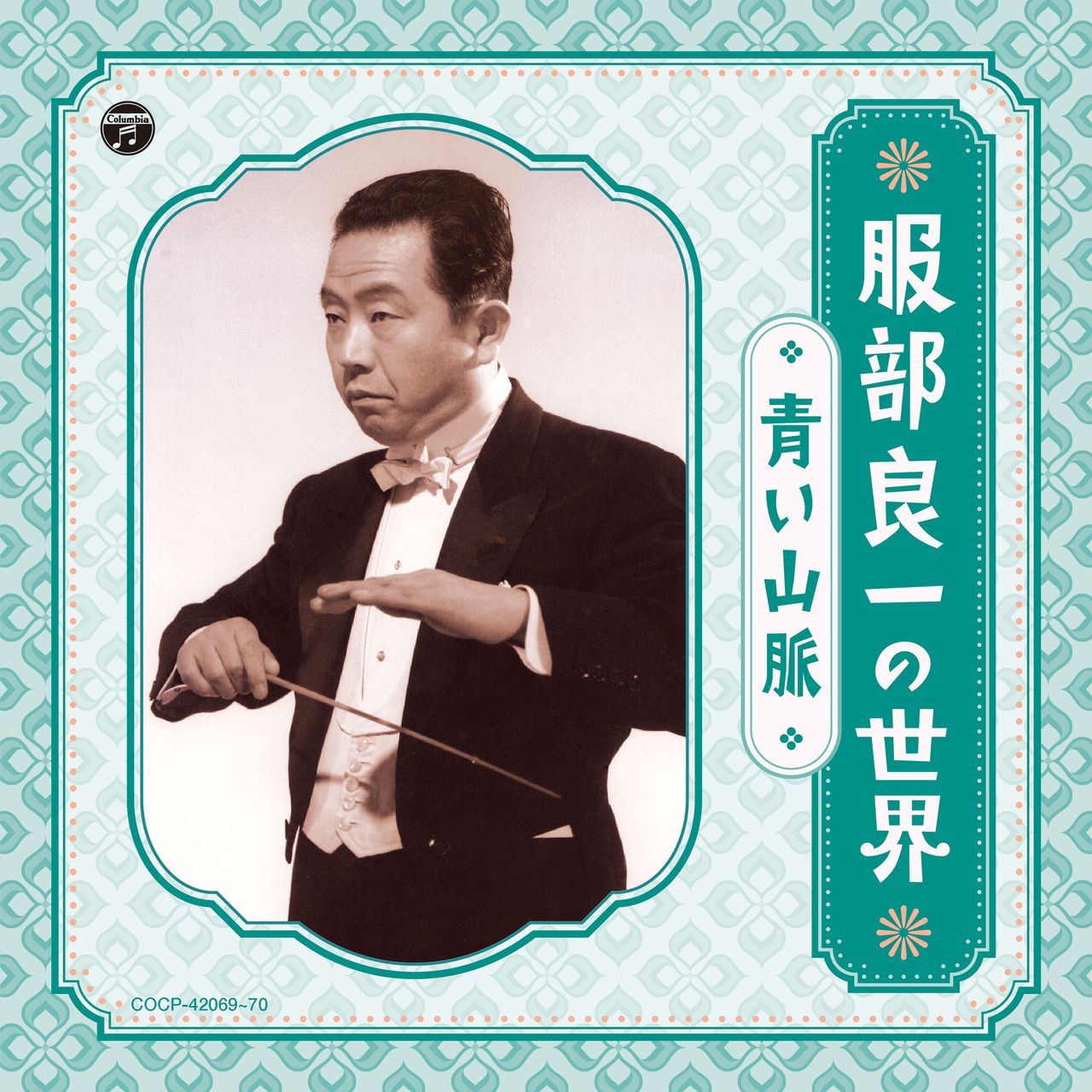
Hattori Ryōichi no sekai: Aoi sanmyaku (The World of Hattori Ryōichi: Blue Mountains), a two-CD collection of Hattori’s favorite songs, recently released by Nippon Columbia.
At the same time, Hattori’s musical development was heavily influenced by the urban currents of the day, particularly jazz. In the early and mid-1920s, musicians performed what Hattori later called “Dōtonbori jazz” on the streets of Osaka, and the sound of brass bands spilled from Western-style bars (known as cafes) and dance halls. Jazz bands were sometimes seen entertaining revelers aboard the yakatabune pleasure boats that plied the Dōtonbori River. There was one wildly popular group called Kawai Dance, made up of geisha who tap-danced to the accompaniment of wind instruments.
In 1927, Osaka’s conservative government shut down the city’s dance halls, which it regarded as a threat to public morals, and the center of dance-hall culture moved to Amagasaki in Hyōgo Prefecture. Hattori formed a band called Ryoichi Hattori and His Manila Red Hat Stompers and cut his teeth as a jazz musician while playing the Amagasaki dance halls.
In the years that followed, Hattori found success across a wide range of vehicles and media, from dance halls and theaters to radio, recording arts, and cinema.
Converging in Post-Quake Tokyo
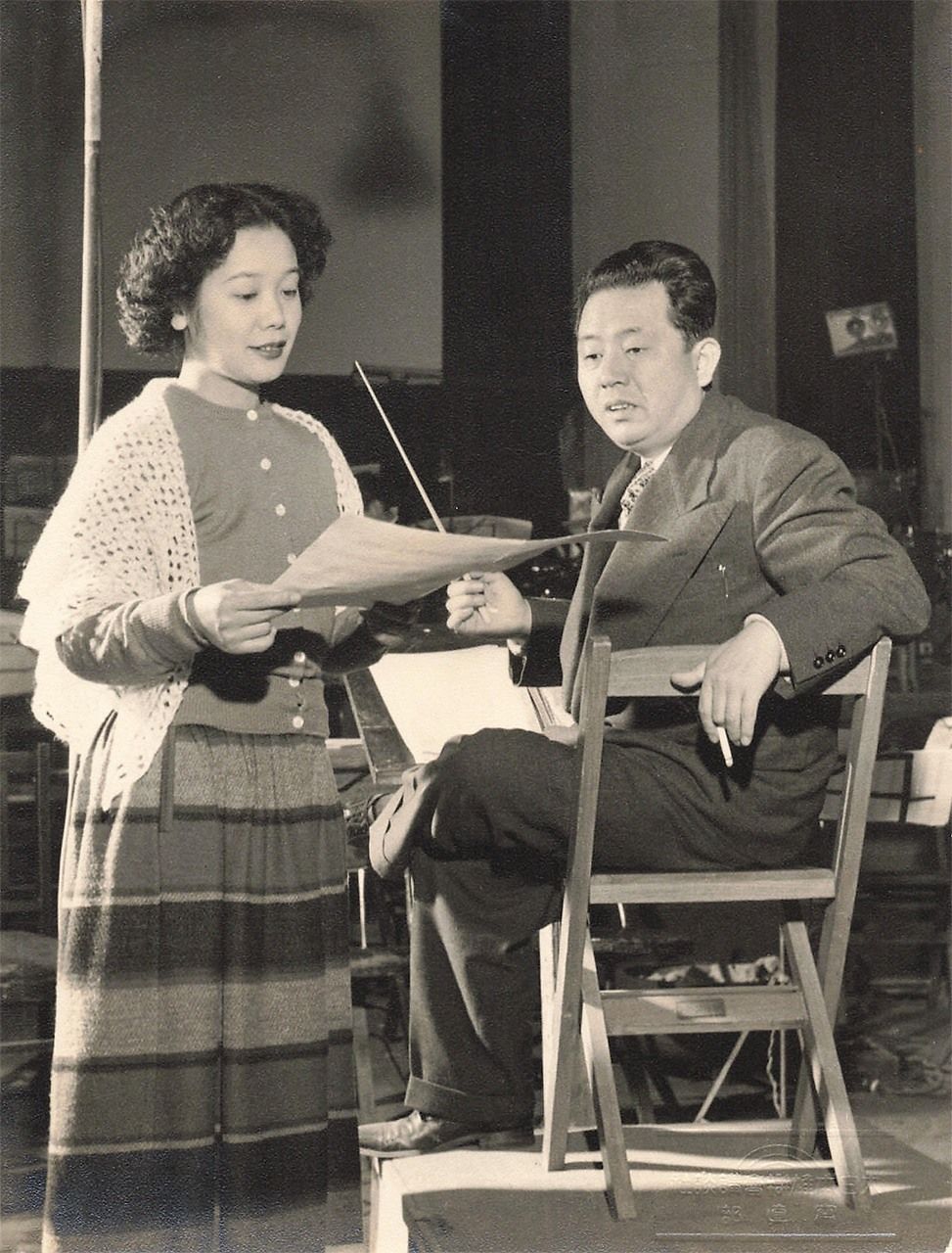
Singer Kasagi Shizuko working with songwriter and conductor Hattori Ryōichi. (Courtesy Hattori Music Publishers)
The reconstruction and modernization of Tokyo following the Great Kantō Earthquake of 1923 was a turning point in the history of popular music in Japan. As the city rebounded, reconstruction and modernization created business opportunities that entertainment giants like Shōchiku, Tōhō, and Yoshimoto Kōgyō were keen to capitalize on. “The Osaka entertainment industry brought its hybrid East-meets-West style of entertainment to Tokyo, and the rise of cinema spread that style over Japan. The eastward flow of Osaka capital and culture set the stage for Kasagi and Hattori’s success,” explains Wajima.
Hattori relocated to the capital in 1933, becoming a composer under contract to Nippon Columbia in 1936. Kasagi arrived on the scene in 1938 to star in a new male-female revue produced by Shōchiku Gakugekidan, with Hattori as the conductor. That seems to have been their first encounter.
“Kasagi’s individuality blossomed after she met Hattori,” says Wajima. “Although largely self-taught as a singer, she was stuck in a kind of bel canto mode, forcing out this high-pitched sound. Hattori advised her to sing with her natural voice,” which he considered a must for any big-band or swing vocalist. Before long, Kasagi had earned the sobriquet Queen of Swing for her earthy, ebullient singing style.
A Stage-Oriented Duo
After 1928, when Columbia and Victor Records established their Japanese subsidiaries, the recording industry emerged as the driving force behind popular music. The various record labels vied to conclude exclusive contracts with promising singers, songwriters, and musicians, whose creativity was often subjugated to the business of making and selling records.
But Kasagi and Hattori were never primarily recording artists. Their songs were geared from the start to performances on stage or screen. Only later were they recorded on vinyl.
“The record labels had a kind of production line for cranking out ryūkōka [hit songs],” says Wajima. “They would typically start out with lyrics that followed a standard syllabic pattern, then add the melody afterward. There was little thought of tailoring the music to a singer’s personal style. Hattori, on the other hand, wrote and arranged most of his songs from start to finish, beginning with the melody, in a style that made the most of Kasagi’s unique persona and voice. That was groundbreaking at the time.”
A brilliant example from this period is “Rappa to musume” (The Girl and the Bugle), recorded in 1939. With its lively call and response between the scat singing of Kasagi (an innovation in Japan) and the trumpet accompaniment, it exemplifies the masterful way in which Hattori’s writing and arranging highlighted Kasagi’s unique qualities as a performer, fostered in the milieu of the revue.
The outbreak of war with the United States in 1941 temporarily disrupted this creative partnership. Jazz was largely banished as “the music of the enemy,” and Kasagi herself came under police scrutiny. But there were other opportunities for performance of pop music—as by entertaining the troops and factory workers—and Kasagi made the most of them during the war years.
The Queen of Boogie
Following the war, Kasagi and Hattori teamed up again to great acclaim. Their breakthrough “Tokyo Boogie Woogie” (1947) was followed by a succession of hits, including the aforementioned “Jungle Boogie.” Crowned the Queen of Boogie, Kasagi emerged as a kind of postwar icon.
But what exactly was boogie woogie, and how did it differ from prewar swing?
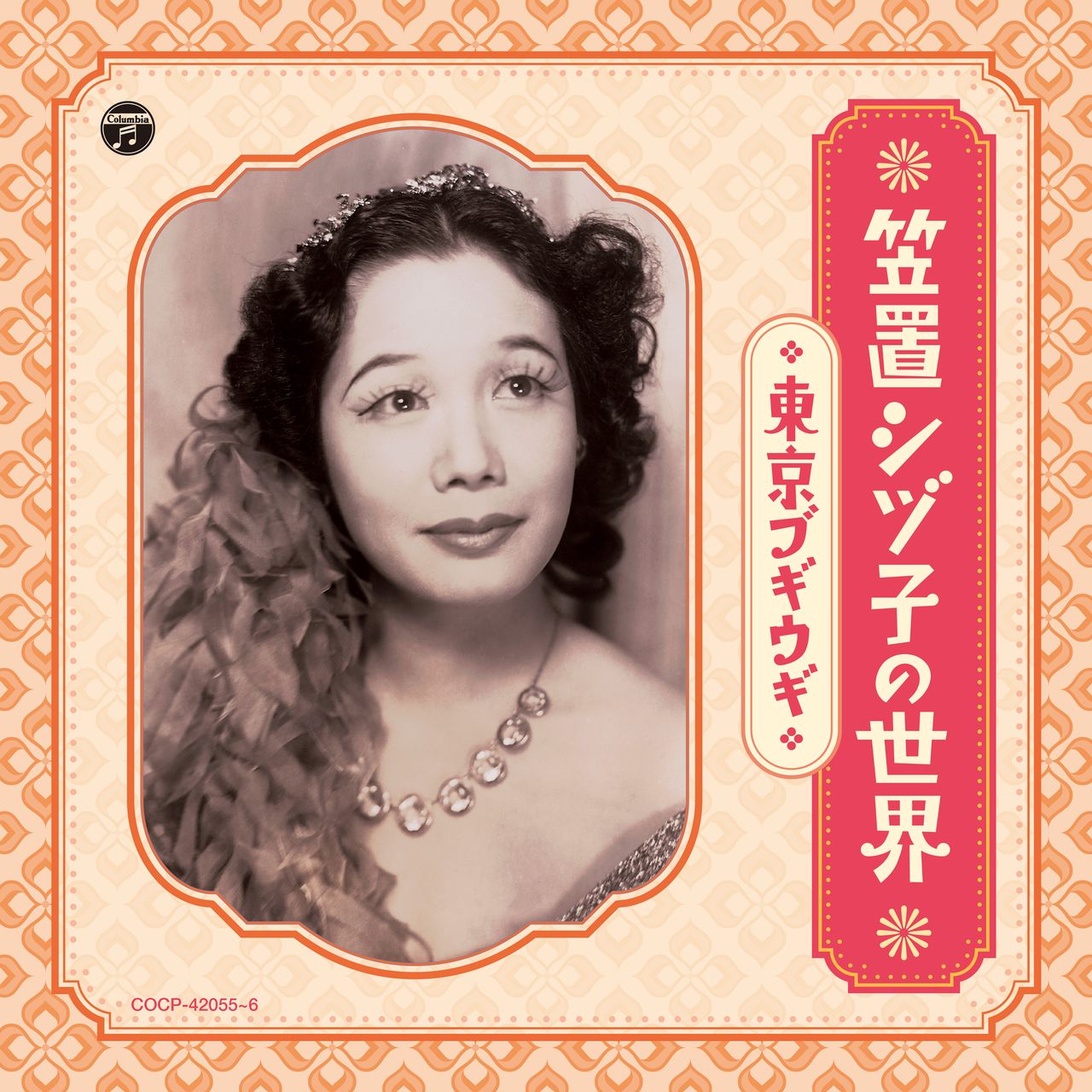
Kasagi Shizuko no sekai: Tōkyō bugi wugi (The World of Kasagi Shizuko: Tokyo Boogie Woogie), a two-CD collection of Kasagi’s recorded songs (including all her “boogies”), recently released by Nippon Columbia.
“Swing is a general term referring to the jazz style of the big band era,” explains Wajima. “Boogie woogie is a more specific style with a constant, repetitive bass line and an up-tempo, driving rhythm that makes you want to dance. But the fact is that Kasagi’s singing style didn’t change much after the war. The big difference was in the enthusiastic way the public received it.”
That reception may have been due in part to the appeal of American culture under the Occupation, acknowledges Wajima. “But I think there was also the sense of release people experienced through Kasagi’s energetic singing and dancing. The affirmation of one’s own body and the sense that it’s okay to express outwardly all the natural feelings bubbling up inside are something that you can’t fully appreciate just by listening to her recordings.”
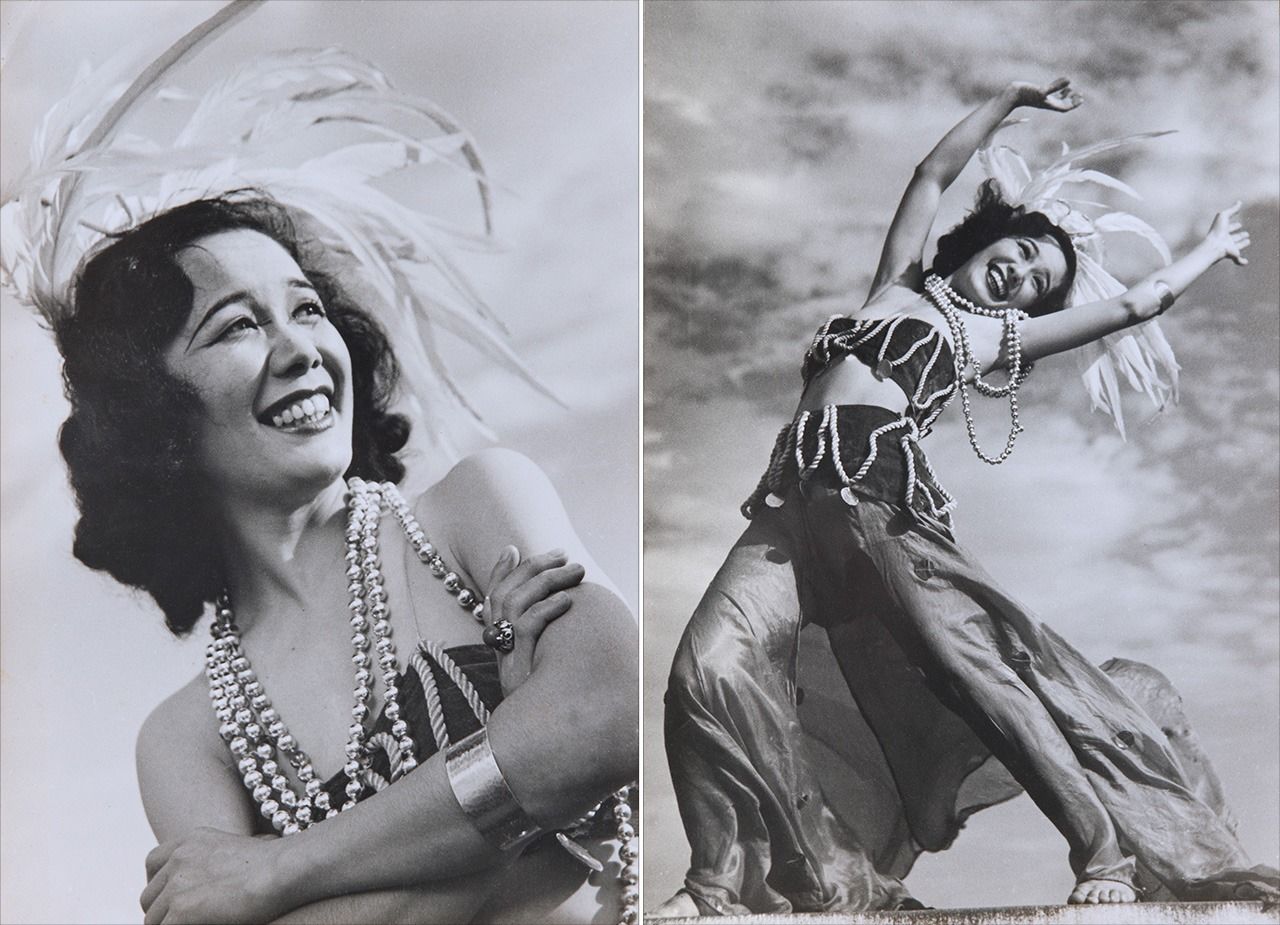
Kasagi Shizuko in publicity photos for the musical Janguru no joō (Queen of the Jungle), performed at the Nippon Theater (commonly known as Nichigeki) in 1948. (Courtesy Kasagi Shizuko Photo Archive)
Fusing Osaka Rakugo and Western Jazz
In Wajima’s estimation, the team’s greatest masterpiece was their last hit, “Kaimono bugi” (Shopping Boogie), released in 1950. Inspired by a comic rakugo story in the kamigata tradition of Kyoto and Osaka, the song narrates, in broad Osaka dialect, the experience of a harried woman running from store to store in confusion, searching fruitlessly for the items on an endless shopping list she has been given. Each verse concludes with the refrain, “Wate honma ni you iwan wa!” (I can’t even tell you!). The musical arrangement makes effective use of the call-and-answer technique, especially when Kasagi tries repeatedly to get the attention of a shopkeeper (“Ossan, ossan!)” before concluding with an exasperated, “Aa, shindo” (Oh, I’m beat).
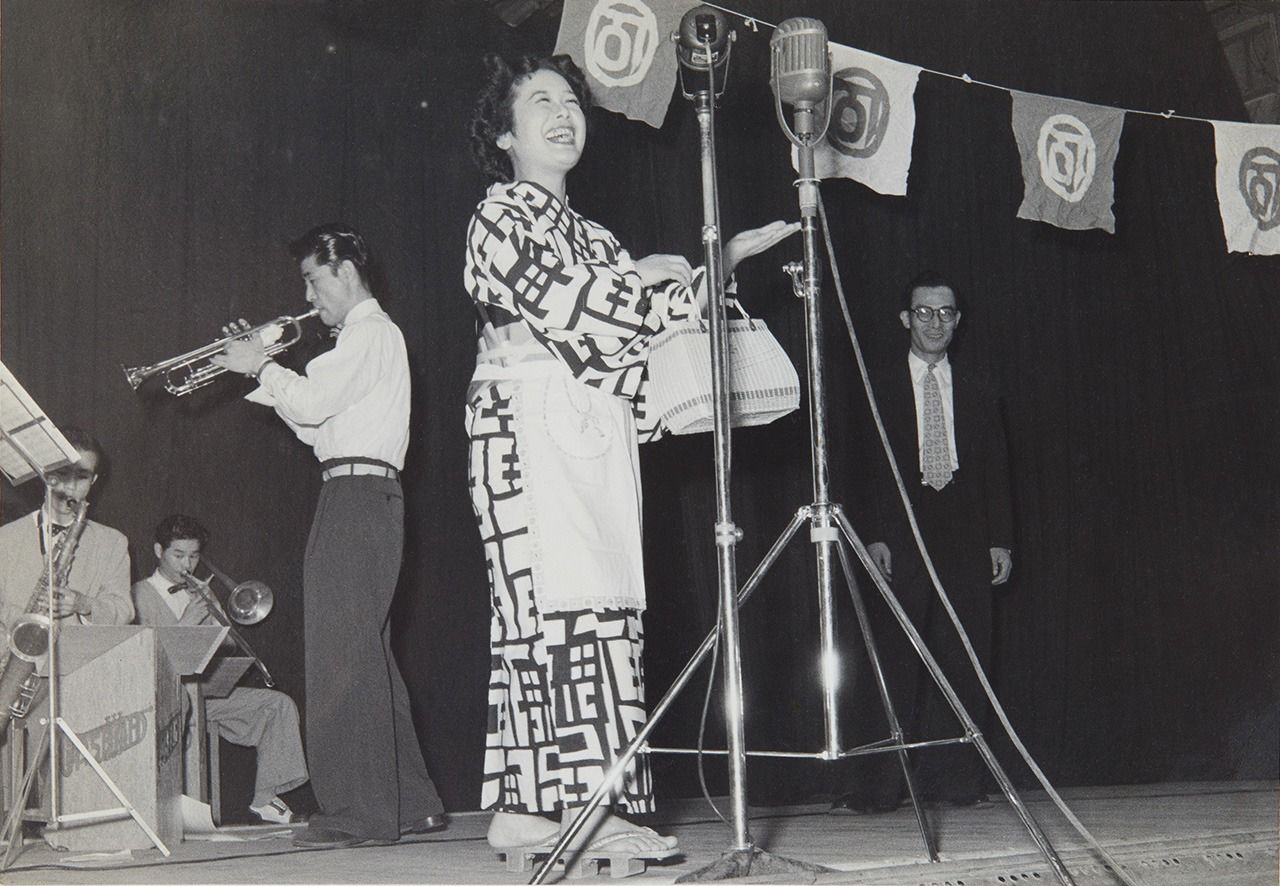
Kasagi Shizuko shows a different side in a performance of “Shopping Boogie.” (Courtesy Kasagi Shizuko Photo Archive)
“It’s a unique mode of expression and a splendid example of ‘rhythm ongyoku,’”comments Wajima. “It plays up the artist’s personality and her interaction with the audience, much in the manner of rakugo, naniwa-bushi, or manzai, while making use of a popular music style originating in American jazz.”
Kasagi and Hattori are the inspiration for Boogie Woogie, the latest morning serialized drama (asadora) from NHK. Wajima hopes that, along with his book, the series will spark a revival of interest in this very special duo and their contribution to the development of popular music in Japan.
related YouTube
- “Rappa to musume” (The Girl and the Bugle)
- “Tokyo Boogie Woogie”
- “Jungle Boogie”
- “Kaimono bugi” (Shopping Boogie)
(Originally written in Japanese by Kimie Itakura of Nippon.com. Banner photo courtesy Kasagi Shizuko Photo Archive.)
Osaka entertainment NHK Kurosawa Akira popular culture Takarazuka Jazz Mifune Toshirō singer
